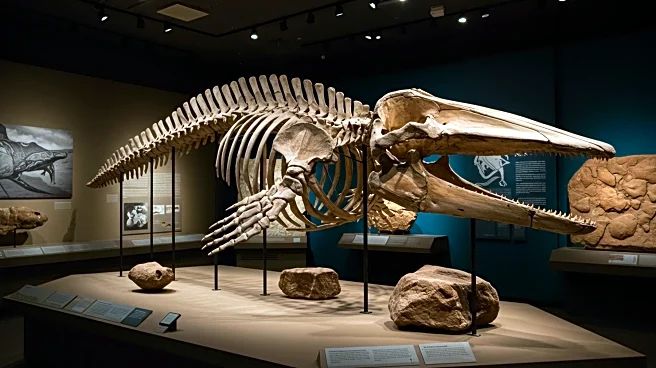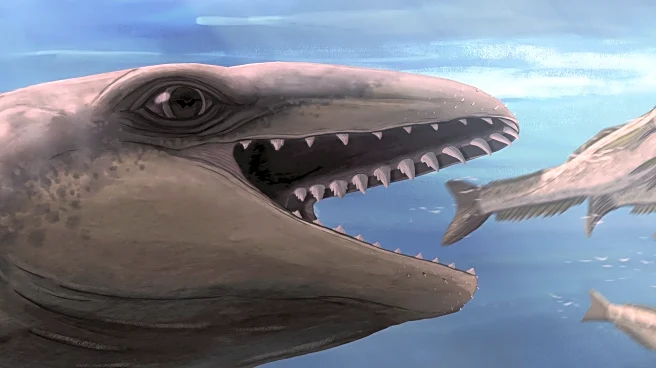What's Happening?
Researchers have identified preserved blood vessel structures in the rib of a Tyrannosaurus rex specimen known as 'Scotty,' one of the largest and most complete T. rex skeletons ever found. The discovery was made using advanced imaging techniques at the Canadian Light Source synchrotron, which allowed scientists to observe mineral shadows where blood once flowed. The study focused on a fracture near the vertebral end of the rib, where healing had begun before the dinosaur's death. The vessel-like structures were found within the callus, a tissue formed during the healing process, and matched the size and pattern of blood vessels associated with healing. This research provides insights into the biological processes of dinosaurs, linking them to modern-day healing processes observed in clinics and labs.
Why It's Important?
The discovery of preserved blood vessels in a T. rex fossil offers significant insights into dinosaur biology and the processes of healing and tissue repair. This finding bridges the gap between ancient and modern biological processes, enhancing our understanding of how life on Earth has evolved. The study demonstrates the potential of non-destructive imaging techniques to reveal delicate features in fossils without damaging them, which could lead to new methods for studying extinct species. By comparing the healing processes in dinosaurs with those in living species, researchers can gain a deeper understanding of evolutionary biology and the mechanisms that have persisted over millions of years.
What's Next?
Future research may focus on identifying similar traces of preserved blood vessels in other dinosaur fossils and distant relatives like early birds and reptiles. Broader sampling and more detailed chemical analysis could allow scientists to compare healing rates, explore links to metabolism, and understand how burial environments affect preservation. This approach could lead to new insights into the biology of extinct species and the evolutionary processes that have shaped life on Earth.
Beyond the Headlines
The study highlights the importance of using non-destructive techniques in paleontology, which can preserve rare specimens while providing detailed insights into their biological history. The findings also contribute to ongoing debates about the preservation of soft tissues in dinosaur fossils, offering a new perspective on how mineral casts can record biological processes. This research underscores the potential for fossils to capture brief, intense biological episodes, providing a window into the past that can inform our understanding of life today.













